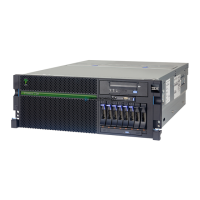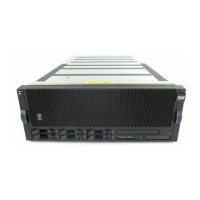Chapter 2. Architecture and technical overview 109
are inversely proportional for most workloads, implying that as the frequency of a
processor increases, its utilization decreases, given a constant workload. Dynamic power
saver mode takes advantage of this relationship to detect opportunities to save power,
based on measured real-time system utilization.
When a system is idle, the system firmware lowers the frequency and voltage to power
energy saver mode values. When fully utilized, the maximum frequency varies, depending
on whether the user favors power savings or system performance. If an administrator
prefers energy savings and a system is fully utilized, the system is designed to reduce the
maximum frequency to about 95% of nominal values. If performance is favored over
energy consumption, the maximum frequency can be increased to up to 111.6% of
nominal frequency for extra performance.
Table 2-30 shows the maximum frequency increases of the various processor options.
Table 2-30 Maximum frequency increase values for Power 720 and Power 740
Dynamic power saver mode is mutually exclusive with power saver mode. Only one of
these modes can be enabled at a given time.
Figure 2-38, taken from the Active Energy Manager, shows the dynamic CPU frequency
change in a system that uses the dynamic power saver mode.
Figure 2-38 Example of a system using Dynamic Power saver mode
Processor module option Power 720 Power 740
3.6 GHz 4-core (FC EPCK) 11.6%
3.6 GHz 6-core (FC EPCL) 11.6%
3.6 GHz 8-core (FC EPCM) 11.6%
4.2 GHz 6-core (FC EPCP) 5.9%
3.6 GHz 8-core (FC EPCQ) 11.6%
4.2 GHz 8-core (FC EPCR) 7.3%
